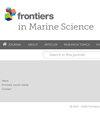珠江口东部印度洋-太平洋座头海豚(Sousa chinensis)栖息地的年际变化
IF 3
2区 生物学
Q1 MARINE & FRESHWATER BIOLOGY
引用次数: 0
摘要
定量分析鲸类栖息地的时空变化对建立海洋保护区和保护鲸类自然种群具有重要意义。尽管它很重要,但关注鲸类栖息地年际变化的研究仍然很少。本研究分析了珠江口东部海域2009 - 2022年的海温(SST)资料和中国海螺(Sousa chinensis)的观测记录。首先,研究了观测努力的时空变化及其与海温的相关性。在此基础上,应用适宜性指数(SI)模型计算了柽柽树生境的年际分布,并评价了生境分布与气候变化的年际变化关系。调查结果显示,中国沙棘主要分布在大屿山周边227 km²的区域内。目击海温在15.9 ~ 29.8°C之间,目击努力与海温呈正相关(r = 0.74, P<0.05)。该模型有效识别了不同年份的生境分布格局,显示2009 - 2022年适宜生境面积呈持续下降趋势(SI≥0.6)。2012年(中性年)记录到的适宜栖息地面积最大,而2020年(La Niña年)记录到的适宜栖息地面积最小。在ENSO事件期间,适宜生境的平均纬度向北移动。本研究为中国海参栖息地研究提供了新的方法,为制定更有效的监测策略提供了支持,并为海洋保护区的建立提供了有价值的见解。本文章由计算机程序翻译,如有差异,请以英文原文为准。
Interannual variability of Indo-Pacific humpback dolphin (Sousa chinensis) habitats in the Eastern Pearl River Estuary, China
Quantifying and analyzing the temporal and spatial variations of cetacean habitats is essential for establishing marine protected areas and preserving natural cetacean populations. Despite its importance, studies focusing on the interannual variability of cetacean habitats remain scarce. This study analyzed sighting records of Sousa chinensis and sea surface temperature (SST) data in the eastern Pearl River Estuary (PRE) from 2009 to 2022. Initially, the spatiotemporal variations in sighting effort and their correlation with SST were examined. Subsequently, the Suitability Index (SI) model was applied to calculate the distribution of S. chinensis habitats across different years and to assess interannual changes in habitat distribution in relation to climate change. The findings revealed that S. chinensis sightings were concentrated within a 227 km² area surrounding Lantau Island in the eastern PRE. The SST where sightings occurred ranged from 15.9°C to 29.8°C, with a strong positive correlation (r = 0.74, P <0.05) between sighting effort and SST. The SI model effectively identified habitat distribution patterns across years, highlighting a continuous decline in the area of suitable habitats (SI ≥ 0.6) from 2009 to 2022. The largest suitable habitat area was recorded in 2012 (a neutral year), while the smallest was observed in 2020 (a La Niña year). During ENSO events, suitable habitats exhibited a northward shift in average latitude. This study introduces novel methodologies for S. chinensis habitat research, supports the development of more effective monitoring strategies, and provides valuable insights for the establishment of marine protected areas.
求助全文
通过发布文献求助,成功后即可免费获取论文全文。
去求助
来源期刊

Frontiers in Marine Science
Agricultural and Biological Sciences-Aquatic Science
CiteScore
5.10
自引率
16.20%
发文量
2443
审稿时长
14 weeks
期刊介绍:
Frontiers in Marine Science publishes rigorously peer-reviewed research that advances our understanding of all aspects of the environment, biology, ecosystem functioning and human interactions with the oceans. Field Chief Editor Carlos M. Duarte at King Abdullah University of Science and Technology Thuwal is supported by an outstanding Editorial Board of international researchers. This multidisciplinary open-access journal is at the forefront of disseminating and communicating scientific knowledge and impactful discoveries to researchers, academics, policy makers and the public worldwide.
With the human population predicted to reach 9 billion people by 2050, it is clear that traditional land resources will not suffice to meet the demand for food or energy, required to support high-quality livelihoods. As a result, the oceans are emerging as a source of untapped assets, with new innovative industries, such as aquaculture, marine biotechnology, marine energy and deep-sea mining growing rapidly under a new era characterized by rapid growth of a blue, ocean-based economy. The sustainability of the blue economy is closely dependent on our knowledge about how to mitigate the impacts of the multiple pressures on the ocean ecosystem associated with the increased scale and diversification of industry operations in the ocean and global human pressures on the environment. Therefore, Frontiers in Marine Science particularly welcomes the communication of research outcomes addressing ocean-based solutions for the emerging challenges, including improved forecasting and observational capacities, understanding biodiversity and ecosystem problems, locally and globally, effective management strategies to maintain ocean health, and an improved capacity to sustainably derive resources from the oceans.
 求助内容:
求助内容: 应助结果提醒方式:
应助结果提醒方式:


